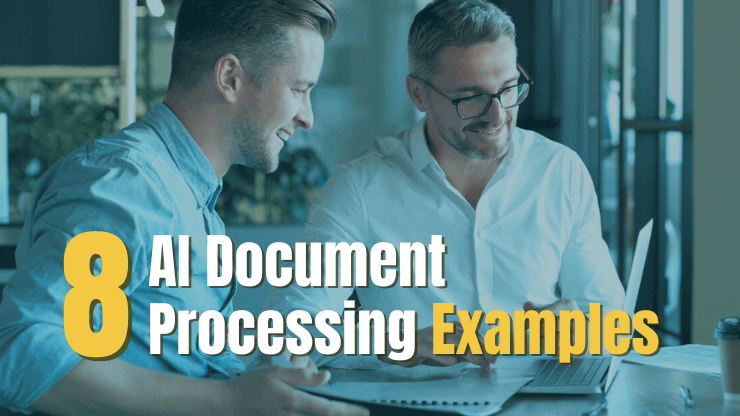AI is fundamentally reshaping every aspect of business, from marketing to supply chain optimization, and it's driving unprecedented levels of efficiency, innovation, and competitiveness. Enterprises are not sitting on the sidelines, in fact by 2025, Global 2000 organizations are expected to dedicate over 40% of their core IT budgets to AI-driven initiatives.
As you navigate the dynamic landscape of AI adoption within your industry, it is imperative to remain attuned to the evolving trends and maturation of this technology. In this article, we will look at the top 12 enterprise AI trends of 2024, equipping you with the latest insights to ensure you stay ahead in this rapidly changing landscape of innovation.
- The state of enterprise AI adoption
- 12 Enterprise AI Trends Dominating the Market in 2024
- 1. AI spending growing substantially
- 2. AI becomes embedded into enterprise software
- 3. AI technology leaders aim at enterprise integration
- 4. Specialized AI add-ons boom
- 5. Growth of multimodal large language models (MLLMs)
- 6. Data extraction from documents becomes highly efficient
- 7. Retrieval-augmented generation (RAG) bolsters user trust
- 8. Human-in-the-loop ML improves accuracy
- 9. AI customer service bots become predictive and proactive
- 10. Platform approach to AI-driven process automation emerges
- 11. Competition accelerates for AI experts
- 12. Workforce training becomes a necessity for AI adoption
- Conclusion
The state of enterprise AI adoption
Enterprises are transitioning from a phase of experimentation to practical deployment, with a focus on aggressive infrastructure and widespread adoption with extensions to the edge of all business activities.
And enterprise leaders themselves confirm this. 60% of enterprise C-suite executives describe their organization’s rate of AI adoption as "fast" or "very fast" according to an MIT Technology Review survey:
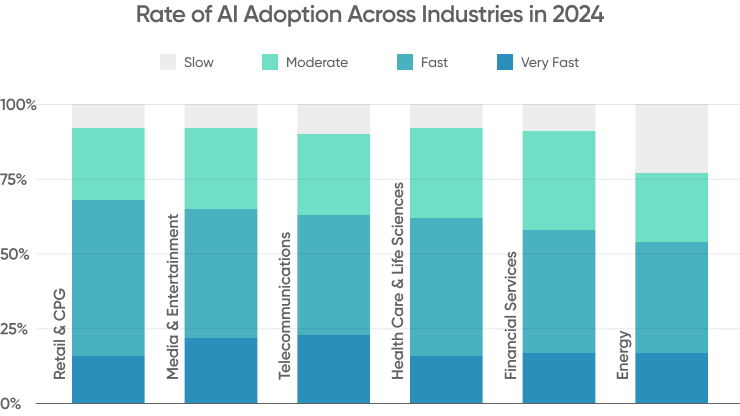
As you can see above, the rate of AI adoption varies across industries, but generally expectations are high for these technologies to boost workforce productivity.
A report from AI Infrastructure reveals a strong sense of optimism among enterprises:
- 81% of survey respondents anticipate AI to elevate their industry’s efficiency by at least 25% in the next two years
- 33%+ of respondents are projecting an increase in efficiency of at least 50%
To achieve this level of business impact, enterprises are making significant investments in AI. In fact, IDC expects the shift in IT spending toward AI will be *fast and dramatic", impacting nearly every industry and application. By the end of 2024, Global 2000 organizations will be allocating over 40% of their core IT spend to AI-related initiatives, leading to a double-digit increase in the rate of product and process innovations.
Enterprise AI adoption rates are at an all time high, and it’s clear that AI technology is here to stay.
Top enterprise AI use cases by industry
As enterprises transition into this next phase of AI adoption and digital transformation, we’re seeing trends in end-use applications emerge. A MIT Technology Review survey of over 600 firms indicates that enterprises are see the most value in AI projects aligned to:
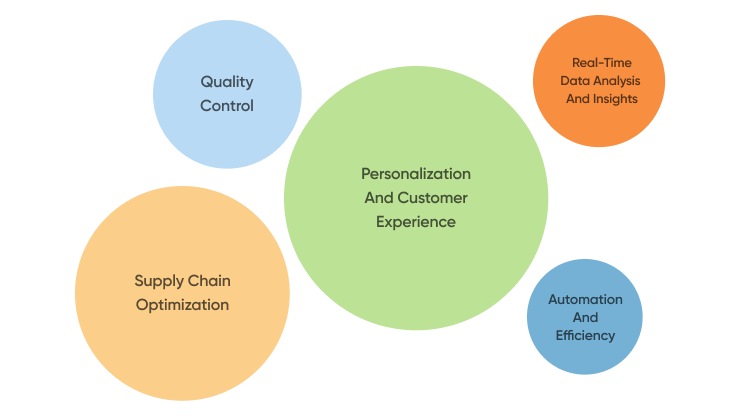
Key challenges enterprises are facing with AI adoption
While enterprises are eagerly adopting LLMs and generative AI to meet the demands of their individual industries, there are a number of challenges across the board that are standing in the way of deploying AI.
C-level leaders of companies with 1B in revenue or more cite their biggest concerns with generative AI are:
- Data: Ensuring the retention of company expertise, development of AI models, and safeguarding a competitive advantage through the protection of corporate intellectual property.
- Customization and flexibility: The capacity to tailor AI models using newly acquired internal data specific to the enterprise.
- Governance: Controlling who has access to sensitive information within the company and managing how this data is governed.
- Performance: Difficulties associated with the fixed performance capabilities of GPT models and their related AI costs.
- Security and compliance The risk of data breaches and privacy issues that threaten the security of enterprise intellectual property and the control over highly confidential data shared with external parties.
12 Enterprise AI Trends Dominating the Market in 2024
The initial excitement surrounding AI is far from fading, as new and innovative use cases continue to emerge at a rapid pace. But how are enterprises responding?
In 2024, the prevailing trends indicate enterprises’ focus on doubling down on AI investments, maturing their deployment of AI for long-term scalability, and equipping their workforce with the necessary skills to embrace AI long-term.
Let’s take a closer look at these top 12 enterprise AI trends that are dominating the market:
AI spending growing substantially
In its Technology, Media, and Telecom Predictions 2024, Deloitte declares that "generative AI gains boardroom momentum" and says that generative AI will move from a "concept buzzing in enterprise circles to a reality reshaping industries."
While forecasts are not consistent for AI spending in 2024, it’s clear that momentum is continuing, and spending is growing substantially. Some highlights:
- SpiceWorks reports that 66% of companies are planning to increase their IT budgets in 2024
- In an MIT Tech Review survey of 600 firms, almost half said they would boost spending on data infrastructure and AI by more than 25% in the coming year.
- IDC shows that enterprises will more than double their spending on GenAI solutions year over year from 2023 to 2024.
- According to Deloitte, Enterprise software companies are expected to experience a revenue uplift of $10 billion by the end of 2024 as a result.
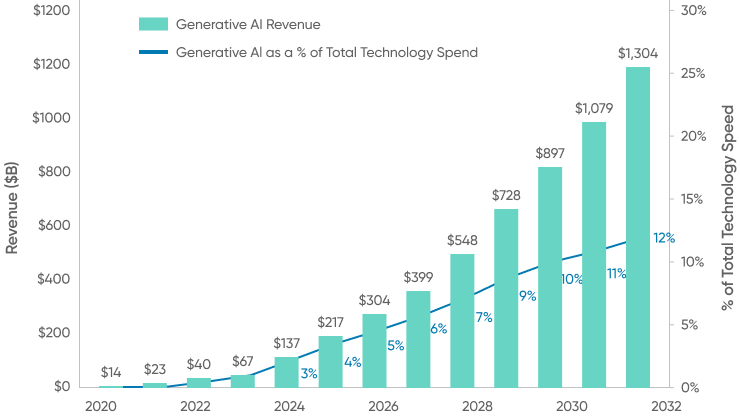
AI becomes embedded into enterprise software
In line with increased spending on AI, Deloitte predicts that generative AI will become integral to nearly all enterprise software offerings in 2024. The integration of artificial intelligence into enterprise software marks a significant leap forward in how businesses operate and manage their business processes.
This trend of embedding AI into familiar enterprise tools represents a low-barrier approach to adopting AI. Instead of requiring new generative AI tools or complex integrations, these AI capabilities are enhancing existing enterprise software, making them more powerful and intelligent.
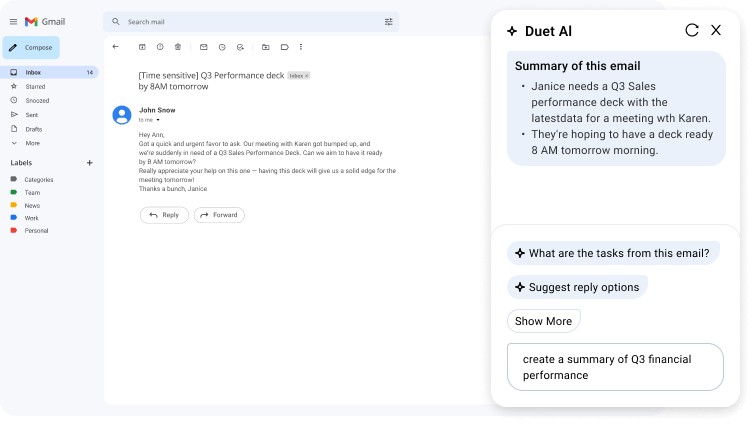
A few of the key players in this space right now are:
- Microsoft 365 Copilot: Utilizes large language models to enhance productivity across Microsoft 365 apps, offering advanced data interpretation and content creation capabilities.
- Google Duet AI: Facilitates real-time insights and predictive text for documents, improving team collaboration efficiency.
- Salesforce Einstein: Salesforce’s AI solution, Einstein, provides advanced AI capabilities across its customer relationship management (CRM) platform, enhancing analytics, customer service, and marketing automation.
- Atlassian's AI Features: Atlassian incorporates AI in its software suite to optimize project management, automate repetitive tasks, and improve decision-making processes.
AI technology leaders aim at enterprise integration
We’re not only seeing AI technologies being integrated directly into existing enterprise software solutions, but we’re also seeing big AI players like OpenAI increasingly focus on tailoring their offerings to meet the specific needs of enterprises.
For example, ChatGPT for enterprise, which launched in the second half of 2023, offers new pricing and features attuned to the demands of enterprise operations, including:
- Enhanced security: Ensures the confidentiality and integrity of business data with robust encryption and privacy-focused training practices, aligned with SOC 2 compliance.
- Enterprise management tools: Streamlines user access and administration through Single Sign-On (SSO) support, domain verification, and an efficient admin console for bulk management.
- Expanded capabilities: Offers businesses unrestricted AI usage with longer prompts and advanced data analysis, enhanced by the latest GPT-4V model, including image input capabilities.
- Customization and workflow integration: Facilitates smoother adoption and greater efficiency in workflow management through customizable chat templates and the ability to build tailored workflows using provided API credits.
This trend marks a clear move away from enterprise-specific AI and ML platforms that popped up early in the AI wave and instead towards the biggest players in the space offering a subset of services targeted at enterprises.
Specialized AI add-ons boom
In addition to more general enterprise-tailored AI solutions popping up, we’re also seeing an expansion of AI add-on marketplaces that extend the functionality of platforms like ChatGPT.
The boom highlights the shift in the AI landscape from one-size-fits-all AI solutions to a more nuanced and customizable approach, where businesses can select and integrate AI functionalities that align closely with their specific challenges and objectives. These marketplaces also provide a fairly simple way for enterprises to explore a variety of workflows or business use cases without investing in expensive, highly custom platforms.
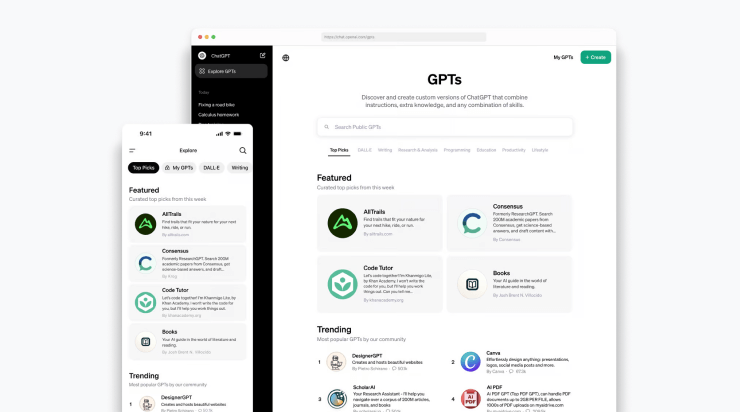
Take a look at two of the biggest AI add-on marketplaces:
- OpenAI's GPT Store which allows users to sell, share, and purchase customized AI agents that can be added on to the “off-the-shelf” functionality of it’s large language models
- Microsoft's Plugin Marketplace for AI App which enhances its enterprise software suite by enabling the integration of AI-powered plugins to its existing business applications.
Growth of multimodal large language models (MLLMs)
OpenAI launched their first MLLM in April 2023, which for the first time integrated computer vision with natural language processing to create a new era of AI capable of interpreting and responding to a mix of text, images, and other data types. In 2024, we’re seeing continued development of ChatGPT computer vision along with other MLLMs in this space.
In fact, the computer vision market is predicted to beat out natural language processing (NLP) as the fastest growing AI technology market, with a predicted CAGR of 36.6% over the next few years.
While there are computer vision-specific models like Vision Transforms (ViT), the space is moving more towards multimodal large language models that support both text and images like:
- Google Gemini: A versatile, natively multimodal Language Model capable of identifying and generating text, images, video, code, and audio
- ChatGPT (GPT-4V): Combines text and image inputs, supporting a variety of prompt types and responses, making it one of the largest multimodal AI tools
- IDEFICS: Open-access visual language model built on publicly available data and models (LLaMA va and OpenCLIP)
Data extraction from documents becomes highly efficient
One of the key applications of MLLMs for enterprises is document processing. However, this is not the only approach. JPMorgan's DocLLM, offers an alternative to MLLMs as a lightweight extension of traditional LLMs that is specifically designed to handle complex documents like PDFs.
DocLLM has demonstrated state-of-the-art results across multiple test datasets, showcasing a 15%+ improvement in understanding form-based documents compared to leading models. This improvement is possible because it uses information about the positions and sizes of text boxes (bounding box information) to understand how text is organized on a page and employs text infilling and fine-tuning mechanisms specifically optimized for business documents.
DocLLM sets the stage for further advancements in existing intelligent document processing solutions on the market as well as for other specialized models to emerge and transform how enterprises interact with their data.
Retrieval-augmented generation (RAG) bolsters user trust
One of the main hindrances to full enterprise adoption of AI is the risk of inaccurate responses and hallucinations. RAG provides enterprises a way to achieve higher levels of AI trust by sourcing responses not just from the LLM, but through an external knowledge base of curated, company-specific data.
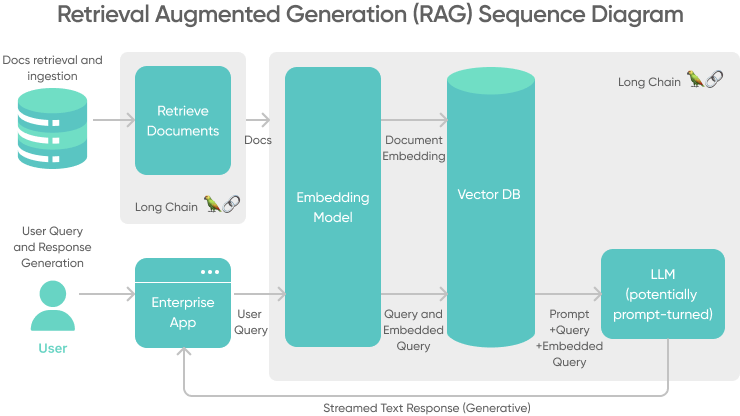
In 2024, RAG systems are enabling enterprise AI systems to:
- Access business-specific data: RAG allows AI systems to tap into extensive internal databases (like customer support documentation or product information), ensuring responses are informed by company-specific knowledge.
- Counter AI hallucinations: RAG effectively addresses AI hallucinations that often stem from reliance on flawed internal datasets. By using verified external data, it significantly improves the accuracy of AI responses and reduces misinformation.
- Enhance reliability and transparency: Applications developed with RAG can cite sources, providing greater reliability and accountability in AI-generated content.
Human-in-the-loop ML improves accuracy
Another approach we’re seeing embraced to improve accuracy is the "human-in-the-loop" (HITL) method. This strategy combines human expertise with AI capabilities. HITL can play a crucial role in speeding up machine learning processes and reducing the chances of costly mistakes.
Wharton School professor Lynn Wu says that AI needs to be thought of as a human augmentation tool rather than a replacement tool or a substitution tool. For example, she says that through human-machine collaboration, DHL was able to significantly improve the efficiency of loading pallets onto their cargo planes and cargo trucks. Key to this process was a continuous feedback loop, where humans improved on something, AI learned from it, and then told humans what else was important.
In 2024, the concept of HITL in AI systems will become more nuanced and clearly defined. Specifically, we’re seeing advancements in two approaches to HITL:
- Tuning and testing during model development: This involves humans setting up the AI system, tuning the model with training data, and providing feedback on its early responses.
- Collaborative work and training after deployment: This involves humans identifying issues in the production environment, double-checking AI outputs, and handling more complex or expert scenarios in tandem with AI.
AI customer service bots become predictive and proactive
AI chatbots are getting more human-like, more proactive, and more predictive. Over 60% of organizations have deployed or will deploy AI to provide customer support or improved customer experiences and recent advancements in generative AI are enabling rapid maturing of these AI-enabled customer service solutions. We’re beginning to see AI customer service bots such as Forethought.AI that provide:
- Advanced self-service for complex queries: These bots are being designed to handle intricate customer interactions, offering solutions that closely mimic human understanding and responses.
- Proactive customer engagement: The AI systems don't just react to queries but proactively engage with customers, addressing needs and concerns before they escalate.
- Predictive support and recommendations: Leveraging data analytics and pattern recognition, these bots are equipped to anticipate customer needs and problems, providing timely suggestions and advice.
Enterprises may find that their existing customer service solutions provide AI features. For example Zendesk is at the forefront of this customer service evolution, providing enterprise customers with new features driven by generative AI.
Platform approach to AI-driven process automation emerges
As enterprises move into the next wave of AI adoption, the focus is increasingly shifting towards scalability, prompting a significant transformation in the landscape of AI-driven process automation. The initial wave saw many organizations independently investing in a variety of automation technologies, leading to a fragmented landscape known as "islands of automation."
This approach often resulted in disjointed systems that hindered scalability and created complexities, particularly when expanding automation efforts across different aspects of employee and customer journeys. In response to these challenges and with an eye on scalable solutions, many enterprises are now gravitating towards comprehensive automation platforms like the Microsoft Power Platform:
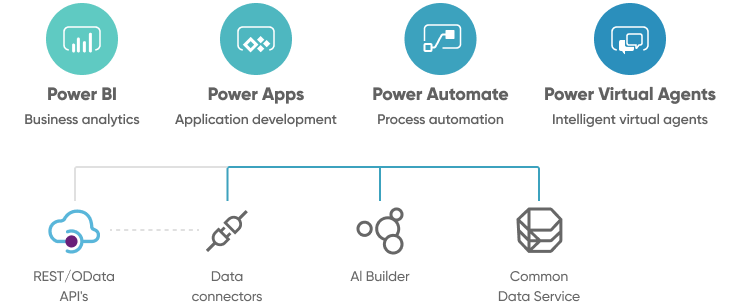
Competition accelerates for AI experts
AI expertise is intensifying rapidly. A LinkedIn report highlights a staggering 74% annual growth rate in AI and ML job postings in the United States over the past three years. The supply of qualified professionals is struggling to keep pace with the industry's requirements, creating a challenging scenario for recruitment.
In response to this, we’re seeing enterprises leverage a three pronged approach:
- Upskilling their existing workforce through AI bootcamps and machine learning training programs.
- Engaging in ongoing, highly competitive recruitment efforts to attract full-time AI experts.
- Utilizing staff augmentation to bring in specialized talent on a project or temporary basis.
Workforce training becomes a necessity for AI adoption
AI demands a new kind of in-the-job training, but only 1 in 10 employees have been offered AI training in the past year. This disparity emphasizes the need for a more inclusive and extensive training program across various levels of an organization as enterprises seek to expand the use of AI across various business operations.
Sander van’t Noordende, CEO of Randstad has said that "AI is here to stay and the benefits of it are very clear – our data shows that employees stand ready to embrace it for their own gain too. Successful organizations will be those that leverage this readiness and harness the opportunities of AI in their workforce."
In 2024, enterprises are taking action and making investments not just in recruiting and retaining AI and ML technologists and developers, but across the board workforce training to empower and equip their teams to leverage AI tools.
Conclusion
The landscape of enterprise AI in 2024 is marked by dynamic growth and transformation. Enterprises are not only increasing their AI investments but are also strategically focusing on areas like workforce training and process automation to fully harness AI's potential. This era signifies a pivotal moment in technological evolution, where AI becomes an indispensable part of enterprise strategy, driving innovation, efficiency, and competitive advantage across various industries.
If you're looking to develop a custom AI solution, consider our generative AI development company. Our team will partner with you to build a comprehensive AI strategy. We'll assist you in selecting the most suitable AI technologies, seamlessly integrating them into your existing tech stack, and delivering a user-ready AI product.

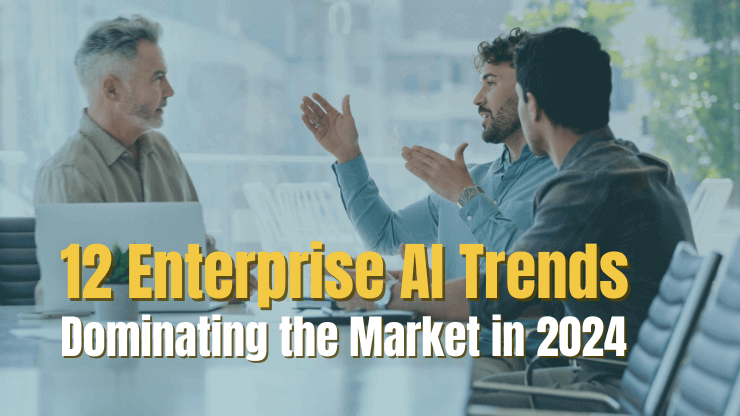
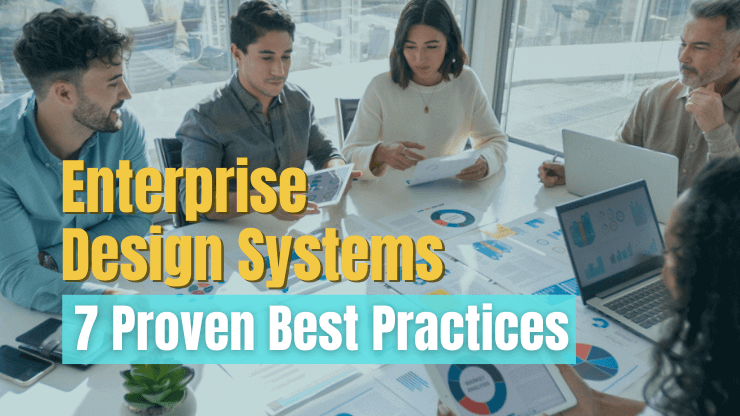

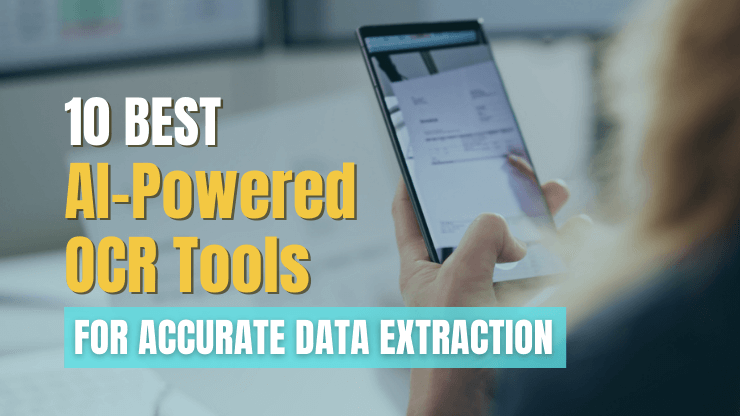

![2024 Guide to ChatGPT Enterprise [Benefits, Risks & More]](/uploads/blog/chatgpt-enterprise/chatgpt-enterprise.png)
